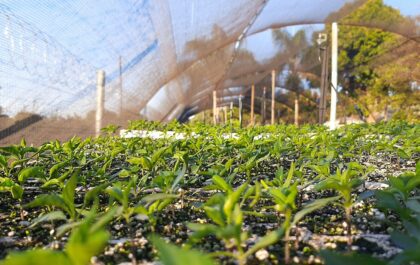Imagine sitting down to a meal that not only delights your taste buds but also nurtures the planet. Sustainable eating is all about making informed choices that benefit both our health and the environment. With growing awareness of climate change and food waste, more people are seeking delicious ways to enjoy meals without compromising their values.
Whether you’re an eco-conscious foodie or just curious about cooking sustainably, this journey into sustainable eating will open up a world of flavors. From seasonal produce to plant-based options, there’s so much we can do with what nature provides us. Get ready to explore mouthwatering recipes and tips that make sustainability easy—and tasty!
What is Sustainable Eating?
Sustainable eating is about making food choices that are good for the environment, our health, and local communities. It focuses on sourcing ingredients that minimize harm to the planet.
This approach encourages consuming seasonal and locally produced foods. By choosing what’s in season, you support farmers while reducing carbon footprints associated with long-distance transportation.
Plant-based diets often play a significant role in sustainable eating. Incorporating more fruits, vegetables, grains, and legumes can lessen reliance on resource-intensive animal products.
Another aspect involves reducing food waste by planning meals effectively and utilizing leftovers creatively. Every little change contributes towards a larger impact on global sustainability efforts.
Sustainable eating fosters a deeper connection between us and the food we consume—inviting mindfulness into every bite we take.
The Environmental Impact of Food Choices
Our food choices shape the environment in significant ways. From production to transportation, every step leaves a mark on our planet.
Meat and dairy industries are among the largest contributors to greenhouse gas emissions. Livestock farming requires vast amounts of land, water, and feed. This leads to deforestation and biodiversity loss.
On the other hand, plant-based foods generally have a lower environmental footprint. They often require fewer resources and produce less waste.
Local sourcing also plays a crucial role. Foods grown nearby not only taste fresher but cut down on carbon emissions associated with long-distance transportation.
Understanding these impacts empowers us as consumers. Each meal can be an opportunity for positive change, promoting sustainability with every bite we take.
Benefits of Sustainable Eating for Your Health and the Planet
Sustainable eating offers a double whammy of benefits. First, it can significantly improve your health. By choosing whole, plant-based foods over processed options, you’re fueling your body with essential nutrients. Fresh fruits and vegetables are packed with vitamins that boost immunity and energy levels.
Then there’s the planet to consider. Sustainable food practices help reduce greenhouse gas emissions. They promote biodiversity by supporting local farms and seasonal produce.
Additionally, this approach encourages mindful consumption. It cultivates an appreciation for where your food comes from and how it’s produced.
Eating sustainably also helps protect water sources by reducing pollution from industrial farming methods. This means cleaner drinking water not just for you but for future generations too.
Every meal is a chance to invest in both personal wellness and environmental stewardship. Making conscious choices creates a ripple effect that extends far beyond the dinner plate.
Creative Ways to Incorporate Sustainable Ingredients into Your Meals
Transforming your meals can be as simple as changing a few ingredients. Start by exploring local farmers’ markets. Fresh, seasonal produce not only tastes better but also supports your community.
Incorporate grains like quinoa and farro into salads for added texture and nutrition. These alternatives are often more sustainable than conventional rice or pasta options.
Try plant-based proteins such as chickpeas and lentils in place of meat. They’re versatile, filling, and have a lower carbon footprint.
Experiment with herbs from your garden or window box instead of store-bought seasonings. This adds flavor while reducing packaging waste.
Don’t forget about food scraps! Use vegetable peels to make broth or compost them to enrich soil for future growing seasons. Engaging creatively with sustainable ingredients enhances both taste and environmental impact without sacrificing enjoyment in cooking.
5 Delectable Recipes for Eco-Conscious Foodies
For eco-conscious foodies, here are five delectable recipes that celebrate sustainability.
Try a vibrant quinoa salad tossed with seasonal veggies, drizzled in a lemon-tahini dressing. It’s colorful and packed with nutrients.
Next up is roasted vegetable pasta. Use locally sourced vegetables and whole-grain pasta for an earthy flavor profile. A sprinkle of fresh herbs ties it all together beautifully.
How about mushroom lentil tacos? They’re hearty and satisfying, topped with avocado crema for extra creaminess.
For dessert, whip up chia seed pudding using almond milk and local honey. Top it off with your favorite fruits for a naturally sweet finish.
Consider making a Buddha bowl filled with brown rice, leafy greens, chickpeas, and assorted toppings like nuts or seeds. Each bite bursts with flavor while being kind to the planet.
Tips for Shopping and Cooking Sustainably on a Budget
Look for seasonal produce at your local farmer’s market. It’s often fresher and more affordable than supermarket options. Plus, you’ll support local businesses.
Plan your meals ahead of time to avoid impulse buys. Create a shopping list based on what you need and stick to it. This helps reduce food waste too.
Buy in bulk when possible. Items like grains, beans, and nuts are typically cheaper in larger quantities. Store them properly to maximize their shelf life.
Embrace frozen fruits and vegetables; they’re picked at peak ripeness and retain most of their nutrients while being budget-friendly.
Try meatless days each week. Beans, lentils, or eggs can be excellent protein sources that cost less than meat but pack plenty of flavor.
Experiment with leftovers by turning yesterday’s dinner into a new dish today—think stir-fries or soups!
How You Can Make a Difference Through Sustainable Eating
Sustainable eating isn’t just a trend; it’s a choice that shapes the future of our planet. Every meal is an opportunity to make a positive impact. You can start by being mindful of where your food comes from and opting for local, seasonal produce whenever possible. Supporting farmers’ markets or community-supported agriculture (CSA) programs helps reduce carbon footprints while promoting biodiversity.
Educating yourself about food labels is also essential. Understanding terms like “organic,” “grass-fed,” or “fair trade” empowers you to make informed decisions that support ethical practices and environmental sustainability.
Consider planning meals ahead to minimize waste. By using what you have at home creatively, you’ll not only save money but also contribute less to landfills. Composting organic scraps transforms waste into nutrient-rich soil for your garden, further closing the loop on sustainable living.
Sharing your journey with others can inspire change in your community too. Organize potlucks featuring sustainable recipes or host workshops on cooking with eco-friendly ingredients. The ripple effect of such actions can be significant as more people become engaged in sustainable habits.
Every small step counts towards making a difference through the way we eat. Think twice before reaching for that pre-packaged snack and explore the flavors nature provides right in our backyards. Embrace this lifestyle not just for yourself but for generations to come—our choices today shape their tomorrow.
























